Sheena Yap Chan is creating a valuable resource for women everywhere, with her podcast The Tao of Self-Confidence.She recently interviewed me, and I hadn't thought about the topic of confidence for quite some time. It had never occurred to me that I lacked self-confidence, because I had always been a high achiever. But in the interview, I realize that my source of confidence has shifted from outer accomplishments to an invisible inner source.
Read moreRemember, Celebrate, and Acknowledge...YOU
One way to define love is "sustained, compassionate attention". These words came from John Muir Laws, a naturalist, educator, and artist who inspires stewardship of the land by sharing his practice of nature sketching. When I read these words, I began to see the importance of my own art practice in developing sustained, compassionate attention for myself.
Read moreBe Willing to Drop the F Bomb
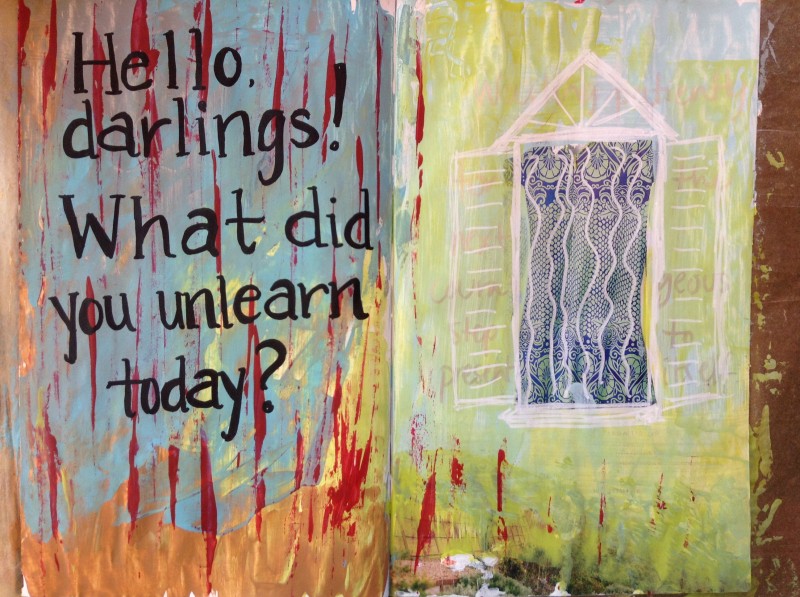 When I was a senior in high school applying to college, I remember one university had as its essay question, "What was your biggest failure and what did you learn from it?". I remember considering not applying to that school because I couldn't think of a failure to write about.
When I was a senior in high school applying to college, I remember one university had as its essay question, "What was your biggest failure and what did you learn from it?". I remember considering not applying to that school because I couldn't think of a failure to write about.
At the time, I was on the receiving end of a lot of attention and praise for never having failed (publicly at least). But now as an adult, I know the trap of living a life based on avoidance of failure. It's no success to have reached all the goals that have been set for you, to have checked all the boxes other people have laid out as important for you, and then to look in the mirror and not recognize yourself. Or to have your body screaming in pain or exhaustion.
Having been there and done that, I have rediscovered the vital importance of failure. Not "achieving" failure as an identity, but being willing to fail. I gave a workshop on Friday to a group of engineers, coaches, consultants, startup founders, and other change agents interested in how groups of people grow and learn. It was based entirely around sound, voice, and music improvisation - in other words, the most common fears of about ninety-nine percent of the population.
The name of the workshop was, "Play the Wrong Note: Daring Adventures in Learning, Failure, and Creativity". The title actually refers to a specific moment in my life when everything changed for me. Those four words - "Play the wrong note" - were the four most compassionate words ever spoken to me by a teacher. No one in a position of authority had ever said, "Lisa, I want to see you break the rules. And I'll help you." It turned out to be the most loving instructions I ever received, and the framework for an entire body of work.
It was about three months in to my sound healing training program. A weekend workshop dedicated to the art of improvisation. I thought I could just observe and let the others do this improvisation thing, which was clearly for "those people" but not me. So I hid behind the teacher with my violin tucked under my arm, hoping he would not see me or ask me to participate in this bluesy, jazzy jam that was happening all around me.
And, of course, at that very moment, he turned around and pointed right at me. "You! Solo!" he said.
I had no idea what to play. I wasn't into blues or jazz and had no reference point for what sounds to make. He could sense that I needed help so he said, "Play the wrong note."
My facial expression must have communicated the feeling I had, which was, "OK. But...which one?". There were an infinite number of wrong notes I could play. How would I know which one was right?
He smiled and took my finger in his hand, and moved it to a random place on the fingerboard of my violin. "Play that," he said gently.
I heard his instructions, but when I tried to play, my bow arm literally would not move. I was so hard-wired to play only the right notes - after daily practicing from age four - that my entire body would not allow me to play any wrong ones.
It was the perfect timing for me. I was ready. I had had a lifetime of good training, practice, and mastery. I was wired for success. But I had no wiring for freedom, fun, or failure. And in that moment, standing there, stranded, in the middle of a room with forty or so people making sounds, having a great time, and waiting for me to solo, I got it.
I could continue to avoid failure, or I could choose to grow into the unknown.
Later that day, in the same workshop, my violin case fell off its chair and onto the floor.
I took it as a sign and stopped avoiding the failures that were wanting to happen for me. I closed my violin school a little over a month later. I started practicing - first in the privacy of my own home, and using my voice, not my violin - making sounds that were all "wrong" to my trained ears. I started PLAYING again. Something I had not done in a long time, and maybe never on my violin.
The adventure that followed was a list of things I could never have planned for my life. I started playing only improvised music, in public, on a stage. I discovered hiking and backpacking. I went to the top of Half Dome and the bottom of the Grand Canyon. I started working at REI - the retail job I was never allowed to have as a teenager because I could earn more money teaching violin or staying home to practice. I won a gig as a gear tester and reporter for Backpacker Magazine, including a free trip to the Outdoor Retailer show in Salt Lake City. I discovered Thai massage and Breema bodywork, which led to traveling to three countries I would never have dreamed of visiting before - Bali, Thailand and Laos. And through my practice of these forms of bodywork, I traded massages for studio days with a couple of artist friends. And I discovered that I could play with paint. Which led to a daily art-making habit. Which has (so far, in the year or so that I've been doing it) led to a juried show, a new blog, and a whole lotta new art supplies in my house.
I could not have written these down on a bucket list because I would never have let my imagination run that wild. Until I was willing to Play The Wrong Note.
And not just once, in a workshop. It was about making a decision to bring the learning from that moment back to my daily life. To find ways to practice that willingness every time the opportunity came up.
It started with music. Being willing to play the wrong note in my personal comfort zone. And then it expanded. Not with planning but as a natural consequence of becoming familiar with the willingness to be "wrong".
So this is my soapbox.
Risk taking is necessary. Being open and willing to fail is necessary. Not knowing is necessary. And these skills are not taught in school. They are not the skills that get you straight A's. They are not the skills that make you look "smart". They are not the skills that earn you the proud distinction of being a Good Daughter (or Wife or Mother). They are not the skills that you use to fill out a college or medical school application. They are often not the stuff of polite cocktail party conversation.
They are the skills of the maverick. The rebel. The free thinker. The one who creates.
So no matter how long ago it was that you experienced your last failure - whether it was just this morning or decades ago or not at all - it is never too late to dive right in. Start practicing the F word.
Take it from a straight A student. Me.
Curious about my "Play The Wrong Note" workshop? Read this blog post or listen to the Creative Conversation we had yesterday about it.
And if you're ready to start practicing Fun, Freedom, and Failure with writing as improvisation, check out my brand new coaching program here.
Wishing You The Fun and Freedom of Being Willing to Fail,
Lisa
Surrender and Loving It 'Til You Know What It Is
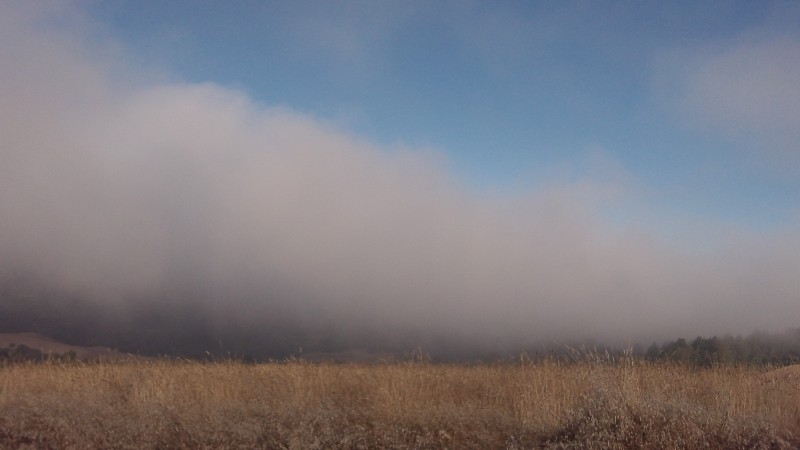 I am in a large group of women artists who have driven up to the ridge of a mountain range and then down a very windy road to a secluded artists retreat program in northern California. All I want to do is stare at the dreamy landscape, watching how the golden green hills go back and back and back, disappearing finally into a fog bank which hovers just above the sea in the distance. I want to watch as the wind blows, the fog clears, and the misty outlines of the hilltops begin to glisten in the midday sunlight. I want to sit and sketch it, and fill in the colors I am seeing, and try to capture the dreaminess, the haziness of it all, the lack of precise outlines which gives it that quality of mystery that makes me want to keep staring.
I am in a large group of women artists who have driven up to the ridge of a mountain range and then down a very windy road to a secluded artists retreat program in northern California. All I want to do is stare at the dreamy landscape, watching how the golden green hills go back and back and back, disappearing finally into a fog bank which hovers just above the sea in the distance. I want to watch as the wind blows, the fog clears, and the misty outlines of the hilltops begin to glisten in the midday sunlight. I want to sit and sketch it, and fill in the colors I am seeing, and try to capture the dreaminess, the haziness of it all, the lack of precise outlines which gives it that quality of mystery that makes me want to keep staring.
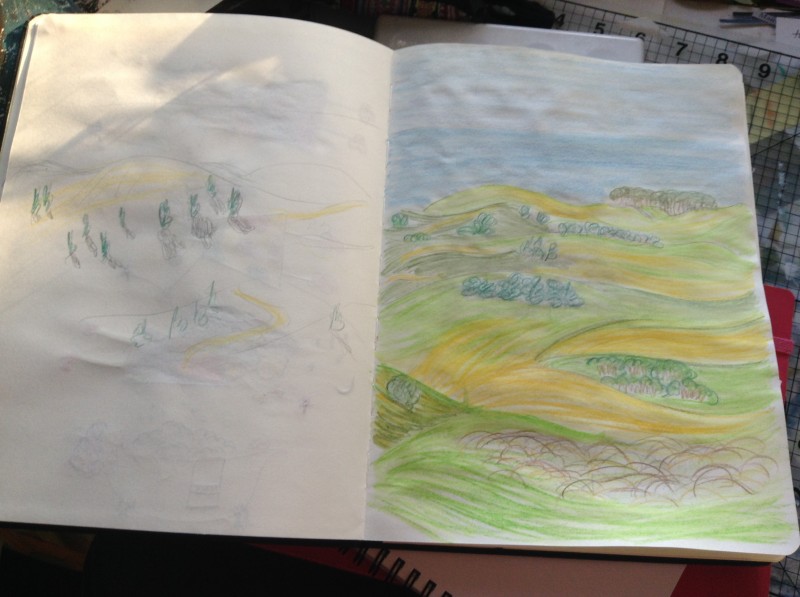
But we have a schedule. There are ranchers and herders moving us along in this schedule, ensuring that we are on time. I help myself to a large lunch - two servings each of lentil soup and kale salad with some fruit on the side. My idea of a perfect meal. But my stomach feels slightly full after all that, and I am ready to rest and digest.
Having forgotten the schedule momentarily, I’m jarred when it is announced that we now need to move into another room for a “movement activity”.
I take my time walking there, hoping those extra few seconds will give my digestive system time to bring the food down a little more.
By the time I join, the circle has been formed and all the women are bouncing lightly on their bare or socked feet. This being one of only 14% of artist residency programs in the country who have a fully spring loaded dance floor, shoes are not allowed.
Ann Swanberg is the leader. I had experienced her work once before in a large church, where she presented her improvisational approach to life in a humorous show. We kept bouncing - this was Ann’s method for keeping us out of our thinking minds and in some other realm governed by the moving, breathing body - and we did a whole host of games designed to get us to drop our personalities by acting silly and free.
What I noticed is that my recent experiences with becoming present were done in the stillness and silent meditative movement of the Breema Center. Somehow in that setting, where I was truly not a personality and there was absolutely no imperative to show up as entertaining in any way, I could feel my own bodily presence. In this setting where everyone was asked to do something silly, there was slight pressure to be “silly enough”. As if stillness would not have been accepted there. But I don’t know because I just flowed with the energy of the room.
One of the more silent and inward-turning exercises of the day did capture my attention. She called it “The Infinity Box” or “Loving It ‘Til You Know What It Is”. The instructions went something like this: Reaching into an imaginary box from which anything is possible, allowing the “Body First” to lead the improvisation, follow the shape your hands spontaneously take as you reach in. As they emerge from the imaginary box, just be with them. Don’t change them or manipulate them into what you think they might be. Just breathe with the shape, feel it.
"Love it ’til you know what it is."
It was fascinating to watch the different shapes my hands took on when I allowed them to. Fingers apart and curved, palms facing up. Fingers together, joined at the thumbs and index fingers. Palms cupped, joined together, facing up. And then waiting. Breathing. Feeling. An answer or image always emerged. But sometimes I had to stay with it longer than expected. The final one I ran out of time on. So I sketched it, and it is permanently imprinted in my bodily memory. I am still wondering what it is.
It reminded me of painting. How the creative practice for me is staying with something long enough to find out what it is. Not to give up. Not to decide in advance that something’s “never going to work”. So often when I have mustered the courage or audacity or love to stay with it, to keep going, to keep loving it, something else so beautiful and magical emerges right on top of it all.
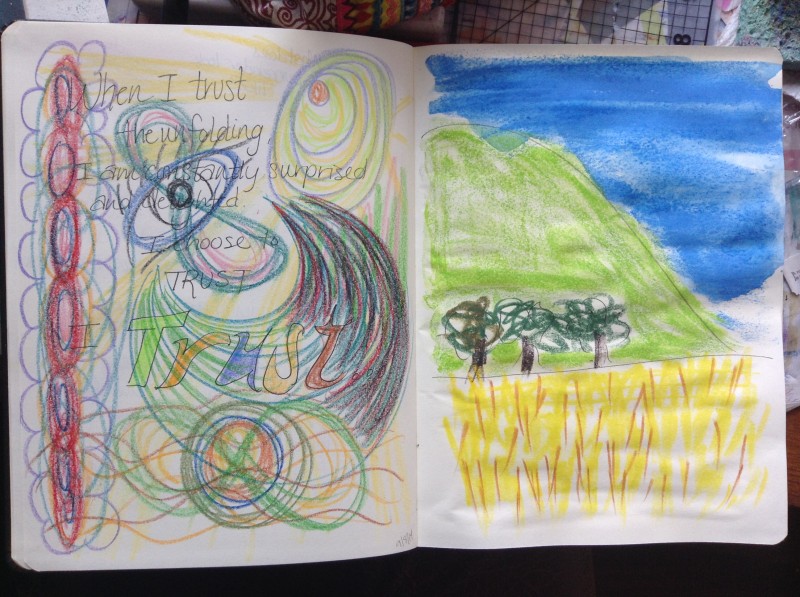
Chris Zydel sent out her newsletter yesterday too, and I happened to read all the way to the bottom. The article was about "Surrender". How surrender is not giving up or weakness or defeat. But rather a form of full presence. That in order to fully participate, there is surrender involved. As I write this, it occurs to me that the four “No…” principles from Breema touch on what kinds of surrender are involved - No Judgment, No Force, No Extra, No Hurry No Pause. Well that’s a lot to give up in order to get to presence! How often are we drowning in judgment, doing more than is needed, rushing around, or not acting because we feel stuck in hesitation.
Surrender is the sweetness of letting life lead. Of loving whatever life gives you until you know what it is. I am attempting to apply it to my body, my relationships, my work decisions, all of which I apply a certain amount of control, changing, and fixing to. I don’t really know the state of full surrender into acceptance. I am pointing towards it sometimes, but I haven’t sunk to the depths of that pool to say, “Huh. So this is it. I’d like to know how this feels. Really.”
Here’s what Chris had to say about surrender:
When a sunflower turns its face to follow the sun, that is surrender. When a seed planted in a rich soil breaks free of its encasement and pushes its way up to the light of day, that is surrender. When a wild mustang gallops wildly and joyfully across a meadow, that is surrender. When a baby tries to grasp a beam of light, laughing delightedly, that is surrender. When you look at a sunset and feel the peace of simply breathing in and out, that is surrender. When you enjoy a delicious meal, letting the flavors tickle your tongue, that is surrender. When you feel drowsy and begin to fall asleep, that is surrender.
In all these experiences you, or the horse or the sunflower are completely giving into what's right there in front of you. You are simply being in the present moment with what you feel drawn to do.
So in other words, surrender is something that happens daily, hourly, minute by minute in our lives. It's so very common and down-to-earth. It's in the most intimate fabric of our existence. And includes everything from the mundane to the ecstatic.
And tomorrow, with the start of the final Energy Gardeners' Club of the year, I am ready to apply the principle of Surrender. Making things happen is not about controlling in order to get what you want. Making is allowing.
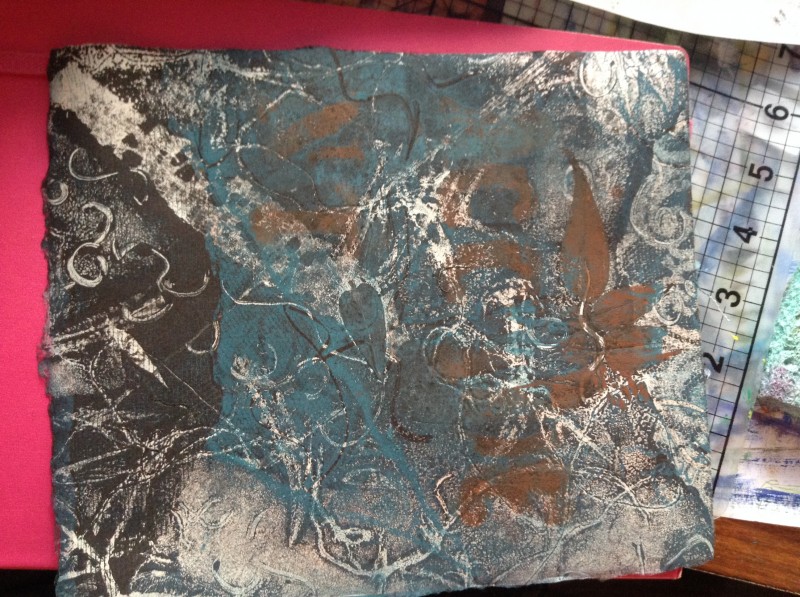
Where are you reaching FROM?
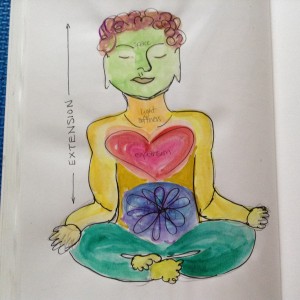 A few weeks ago, on August 20, I read the news that BKS Iyengar, the renowned Indian yoga teacher and founder of the Iyengar Yoga tradition, had died at age 95. Immediately I was brought back to the many memories I have as a result of his teachings. My first California yoga teachers were trained in the Iyengar tradition. In their classes I was exposed for the first time to silent meditation and chanting. I remember as a student just managing to tolerate these first few minutes of ritual as I waited for "the real yoga class" to begin. What could these Sanskrit sounds possibly have to do with my physical strength, flexibility, and fitness, which is why I did yoga (or so I thought)?
A few weeks ago, on August 20, I read the news that BKS Iyengar, the renowned Indian yoga teacher and founder of the Iyengar Yoga tradition, had died at age 95. Immediately I was brought back to the many memories I have as a result of his teachings. My first California yoga teachers were trained in the Iyengar tradition. In their classes I was exposed for the first time to silent meditation and chanting. I remember as a student just managing to tolerate these first few minutes of ritual as I waited for "the real yoga class" to begin. What could these Sanskrit sounds possibly have to do with my physical strength, flexibility, and fitness, which is why I did yoga (or so I thought)?
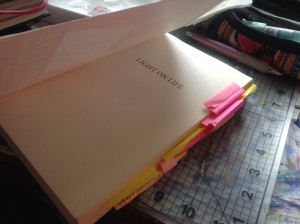 As soon as I read the news, I went to my bookshelf and pulled off my well-worn copy of Iyengar's book, Light on Life. Nearly every page is marked and notated, evidence of the way I used to read as if every book were homework that I would have to write a paper on someday.
As soon as I read the news, I went to my bookshelf and pulled off my well-worn copy of Iyengar's book, Light on Life. Nearly every page is marked and notated, evidence of the way I used to read as if every book were homework that I would have to write a paper on someday.
The pages that the book fell open to were about extension and expansion in yoga poses. How when we reach and stretch, we often only think about the point to which we are trying to reach, but we forget about where we are reaching from. And as I pondered this, I realized that no matter how far we are trying to stretch, we are always reaching from where we are now. From the center of our being.
How often do we check in with how we are as we are doing something?
With the completeness of our focus on the outward gaze, how skilled are we at really seeing the inner place we are always reaching from? Do we know this place? Do we know how it feels? Do we really know it as it is NOW, or do we know it as a memory, a snapshot of some previous moment in time, or some interpretation created by our judging mind? Do we only see what we think other people are seeing - some image of how we're supposed to look?
Developing clear inner vision, and the capacity to really see where we are reaching from, is the core practice of being present. In the years since I started yoga practice, I have been exposed to many more forms that give the body, mind, and soul the opportunity to be together in harmony - improvisational music, whole body listening, Breema bodywork, to name a few. When this harmony is happening, we have the opportunity to see the world within our true selves. When we practice seeing into our true selves, we begin to know more and more where we are reaching from in any moment, even as we continue to reach toward something else.
Each day since Iyengar's death, I have read a few pages of the book again. I am grateful for the life he lived that enabled him to write those words on the page. And I feel gratitude for the life I am living that enables me to understand the meaning of those words beyond the page.
Where are you reaching FROM? And how can you practice seeing your true self with inward-looking eyes?
Join me in the Energy Gardeners' Club for some practice with the support of nature, sound, art, and a circle of safety and encouragement. Starting next Tuesday, September 9th in Half Moon Bay.
How is your relationship with Not Knowing?
"Not Knowing is most intimate..." - Zen saying
This is a note for you. You are such a good student, when there's a teacher standing in front of the class, and other students surrounding you, all learning to do the same things. You are a stellar worker, always taking responsibility for your job, above and beyond the call of duty. You take instructions quickly, correct your mistakes diligently, and do everything you can to get along with others. You are smart, capable, successful, but still feel there's something missing from your life, even though you can't quite name it.
So what is it? What is that missing thing?
I don't know.
But I'm willing to bet that your relationship with Not Knowing could use a little tune-up. A little checking in and refamiliarizing. You see, each of us was born in a state of perfect Not Knowing. The first several years of our lives were filled with the joy, awe, and wonder of discovering, playing, experimenting, failing, and doing it all over again every single moment. This is how we learned to walk, talk, and explore the world around us. There was tremendous accumulation during this time, but the overwhelming majority of space was occupied with Not Knowing, and being perfectly content with that.
Then we acquired language, and experience, and started going to school, where we learned to correct our mistakes diligently, take instructions quickly, and get along with others.
Those skills served us in advancing through lots more school, in getting a job, and then learning the ways of the business and professional worlds.
Somewhere along the way, all of that accumulation began to take up much more space than Not Knowing. In fact, we may not even remember the last time we did something for the first time.
So right now you may be wondering, "How does Not Knowing actually solve a problem I'm experiencing in my life?".
Consider how your life might be different if you reclaimed the fun of it. Not having a reason, but just doing it - you know, whatever that thing is that you've always wanted to do or try. Letting go of what experience tells you, and embracing the fresh innocence of the present moment. Better yet, just existing without judgment.
If any of these sound scary or crazy, it may just be that you've been out of practice at Not Knowing.
And how do you practice Not Knowing? Well, not by fixing it or solving it. Not by hunting for an answer, or coming up with a plan.
But by consciously being there. And watching attentively while you are there.
Last night I went to my first ever hula dancing class. I had never dreamt of hula before, but I saw a performance locally that really inspired me, and then I found out there was a community class offered right in my town.
So I showed up.
There was a lot to learn. The teacher started out slowly, showing us the basic steps, then putting a few of them together into a simple first dance. Then we newbies were sent to the back of the classroom and were told to fake our way along with the more experienced dancers as they rehearsed songs they already knew.
I got to experience myself in the moment of Not Knowing, and to see how I stayed with myself. Now I am at a point where I can see this as a precious gift. But I also know that not so long ago, this was an edge I very carefully avoided, constructing my life so that I would never be in that position of Not Knowing.
How do you react when you are put in the space of Not Knowing?
Do you ask for more information?
Do you look around for someone who looks like they know what they're doing, then copy?
Do you sit out and wait until next time, when you'll definitely know more and do better?
Do you just keep moving, doing what you can, trusting that this is exactly where you should be?
Do you compare what you can do now to what others around you are doing, trying to figure out what's wrong?
All of these are possible ways to relate to Not Knowing.
And all of these responses - if we are able to observe them in ourselves - hold the possibility to bring us closer to knowing ourselves. Closer to becoming intimate with Not Knowing. And more grateful for being exactly where we are in any given moment.
So that is the gift of any brand new experience, whether you enter it by choice, opportunity, or crisis.
In one form or another, all of my work is an opportunity for you to experience yourself in relationship with Not Knowing. I hold open the space for you to experience how you are as you navigate this unfamiliar territory.
This fall, I'm offering you an expansive yet gentle way to become more intimate with your own space of Not Knowing. It's an oceanside retreat with me and a circle of 6 participants, called "Beyond Knowing: Many Paths to the Present Moment."
We will learn from the teachers in nature - the ocean, the sky, the birds, the trees, the sand. We will also learn from approaching and entering various portals to the present moment, which is always fresh and alive with Not Knowing. We will discover what arises when we clear our attachments to thoughts, align our mind-body-soul, and allow our innate expressions to find a voice. We will create a safe space together where we can touch the space of Not Knowing, with gentleness and firmness, full participation, mutual support, no judgment, no force, and no extra.
You will take home tools that you can continue to practice in your daily life, each time you come in contact with the beauty and terror of Not Knowing. You will also take home artifacts from your unique expressions created in the setting of the circle of support provided during the retreat, reminding you of your heart's truth, and your magical reserves of resilience. You will also have the experience - carried in every cell of your body - of having become more familiar, more intimate with Not Knowing.
You can learn all the details about the retreat here.
The Journey of Yoga and Healing Sounds - Class at Prajna Center in Belmont
The air is thick with the scent of lavender, heavy with the warmth of bodies at rest. A single strand of white lights twists, dances, curls along the floor where it meets the rising wall, hinting at the outer boundary of the otherwise darkened room. I rise from a state of complete rest, quiet inside my body, after a Restorative Yoga class with John. I am curious about what sounds I will invite into the already perfect silence and stillness enveloping me. I set up my sacred space, an altar to my joy, my circle of support, my ability to love and to transform, to play and to create.
[singlepic id=474 w=320 h=240 float=center]
I settle in to the energy of these objects on my altar, which bring me peace and freedom even as I step closer to the edge of vulnerability in the open space.
The sound of the shruti box calms me, grounds me with a gentle yet firm foundation. It is both undulating and constant, a launching pad into the infinite as well as a soft place to land and be nurtured.
I invite sounds from all who are in the room. Immediately we are one – a chorus. Singers who don’t need to know the song, who simply listen and offer what comes naturally from within. A sigh, an exhale, a melodious note – it doesn’t matter. We are in this space together, experiencing this magic together. We enter the practice as one.
Yiwen begins to invite bodies into motion, the sounds of conscious breath now filling the room. I move with these energies, selecting sounds from the instruments available to me – my voice, a chime, a violin, a kalimba, a drum.
We dance together – sound and movement, breath and vibration – as one.
Finally, we arrive at a point of stillness. Silence. There is nothing more complete than this particular silence. We feel it from the base of our spines to the tips of our fingers. We experience it in this way as a result of our journey together, our collective ride over the waves of breath, movement, and sound.
As the class comes to a close, there is a pause. It is as if we want to preserve or bask in this feeling for just a little longer. We open our eyes, now brighter, smiling from within. We know, without saying a word, that we are welcome here.
You can join me and Yiwen Chang for Yoga & Healing Sounds class on the 2nd Sunday of each month, 5:30pm to 7:00pm at Prajna Yoga & Healing Arts Center in Belmont, CA. This Sunday, February 12, I will be collaborating with the unique sounds of Jovani, whose paintings are currently on display at Prajna.

